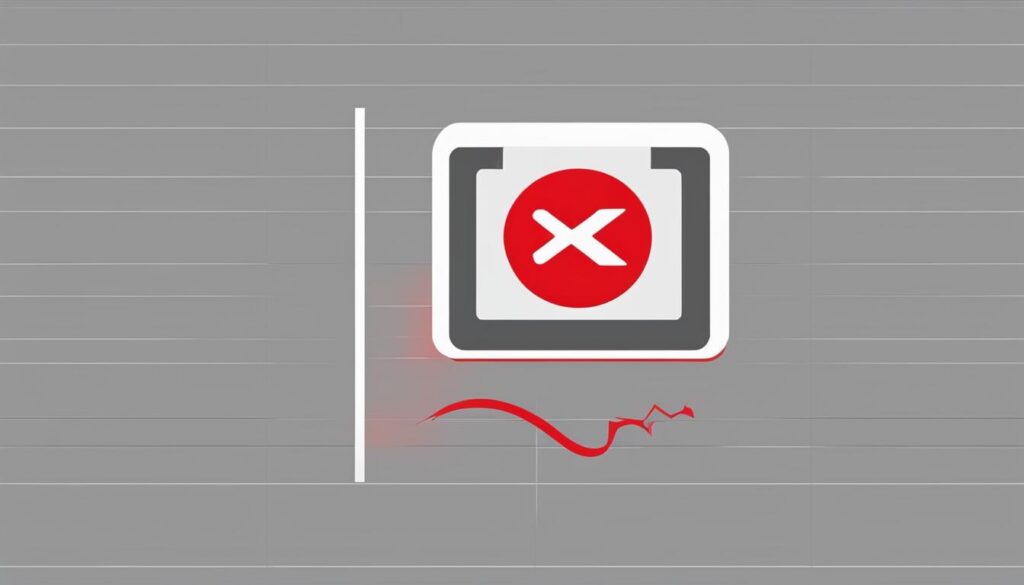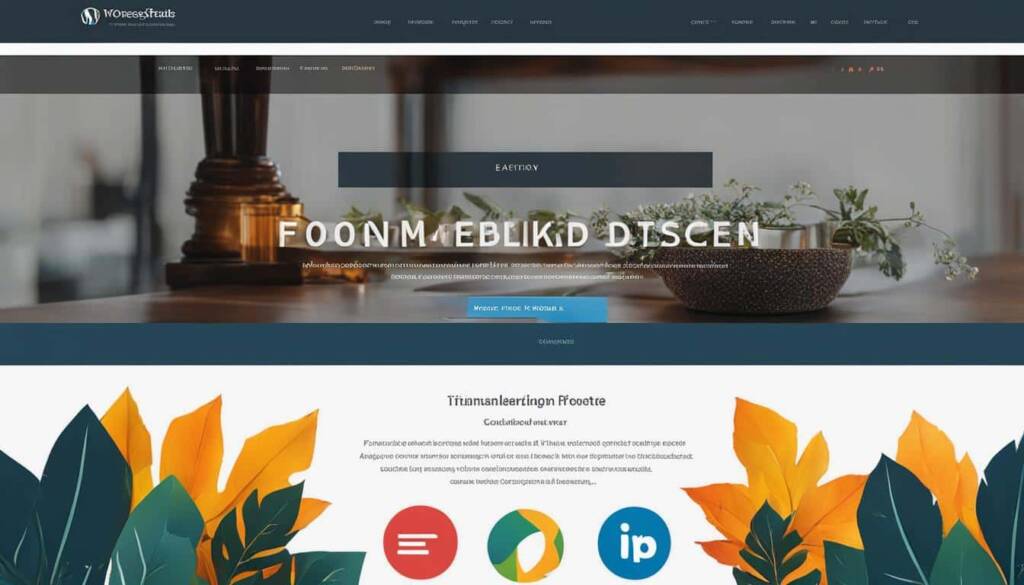Table of Contents
If you’re looking to change the layout and design of your WordPress footer, you’ve come to the right place. In this article, we will provide you with step-by-step instructions on how to edit and customize the footer in WordPress to match your preferences.
Editing the footer in WordPress allows you to add widgets, modify text and links, and even insert code snippets to enhance the functionality and visual appeal of your website. Whether you want to change the default footer text or create a completely customized footer, we’ve got you covered!
By the end of this article, you’ll be equipped with the knowledge to:
- Change the footer in WordPress
- Edit and customize the footer to suit your needs
- Add widgets to your WordPress footer
- Remove the ‘Powered by WordPress’ text from your footer
- Create different footers for different WordPress pages
- Add code and scripts to your WordPress footer
- Edit the footer in WordPress.com
So, let’s dive in and learn how to make your WordPress footer truly your own!
Note: All steps provided in this article are applicable to self-hosted WordPress sites. If you are using WordPress.com, please refer to Section 6 for instructions on editing the footer in WordPress.com.
WordPress themes usually come with a footer widget area that can be easily edited. By adding widgets to the footer, you can enhance the functionality and visual appeal of your website’s bottom section. With widgets, you have the flexibility to include text, images, and links to important pages such as the privacy policy and legal disclaimers. Additionally, you can leverage widgets to incorporate social media links and create a fully customized footer for different pages.
To add widgets to your footer in WordPress, follow these simple steps:
- Navigate to the Appearance » Widgets page in your WordPress dashboard.
- Look for the footer widget area section.
- Drag and drop the desired widgets from the available options into the footer widget area.
Once you’ve added the widgets, they will be displayed in your website’s footer. You can rearrange the order of the widgets by dragging and dropping them within the widget area. This allows you to create a customized layout that aligns with your design preferences.
Adding widgets to your footer enables you to provide valuable information, improve navigation, and engage visitors with relevant content. For example, you can showcase your latest blog posts, display a newsletter signup form, or feature testimonials from satisfied customers.
By taking advantage of the footer widget area in WordPress, you can maximize the potential of your website’s bottom section and create a professional and user-friendly browsing experience.
Image: The footer widget area in WordPress allows you to add widgets and customize the bottom section of your website.
Many WordPress themes display a ‘Powered by WordPress’ link in the footer by default. To maintain a professional and customized look for your website, it’s important to remove or change this default text. Thankfully, WordPress provides simple methods to achieve this.
Using the Theme Customizer
The easiest way to remove or change the ‘Powered by WordPress’ text is by using the theme customizer. Follow these steps to access the customizer:
- Go to Appearance » Customize in your WordPress dashboard.
- Look for the Footer options in the customizer menu.
- Depending on your theme, you may find a specific section to edit the footer text or options to customize the footer layout.
- Find the ‘Powered by WordPress’ text and either delete it or replace it with your preferred text.
- Save your changes.
If your theme doesn’t provide a direct option to edit the footer text in the customizer, you can modify the ‘footer.php’ file. However, exercise caution as this method requires knowledge of PHP code:
- Access your website’s files through FTP or the file manager in your hosting control panel.
- Navigate to the ‘wp-content/themes/your-theme-name’ directory.
- Locate the ‘footer.php’ file and open it with a text editor.
- Search for the ‘Powered by WordPress’ text within the file.
- Delete or modify the text as desired.
- Save the changes and upload the modified ‘footer.php’ file back to your server.
By following these methods, you can easily remove or customize the ‘Powered by WordPress’ text in your footer, adding a personal touch to your website’s design.

Summary
The ‘Powered by WordPress’ text can be easily removed or changed from your website’s footer using the theme customizer or by editing the ‘footer.php’ file. The customizer provides a user-friendly interface for modifying the footer text, while editing the file directly offers more flexibility but requires knowledge of PHP code. Select the method that best suits your needs and enjoy a customized footer that aligns with your brand’s identity.
If you want to have different footers for various pages on your WordPress site, you have a few options to achieve this customization. One method is to use a plugin called SeedProd, which offers a user-friendly drag-and-drop builder. With SeedProd, you can design unique footers for specific pages such as the homepage, checkout page, or thank you page, allowing you to tailor each footer to match the content and purpose of the page.
Another approach is to create template parts within the WordPress Site Editor. By utilizing this feature, you can design custom footers and assign them to different pages as needed. This method gives you more control over the design and layout of your footers, allowing you to create distinct experiences for each page on your website.
Whether you choose to use a plugin like SeedProd or leverage the template parts feature, having different footers for different WordPress pages can enhance the user experience and provide a cohesive design throughout your site.
- Enhanced branding and visual consistency
- Targeted messaging and calls-to-action
- Improved user navigation and experience
- Increased flexibility and customization options
By customizing your footers per page, you can create a more engaging and tailored experience for your website visitors. Whether it’s highlighting specific products or services, promoting special offers, or featuring unique content, custom footers can help you achieve your website goals.
If you need to add HTML code, scripts, or tracking codes to the footer of your WordPress site, you can do so effortlessly using the Insert Headers and Footers plugin. By leveraging this plugin, you can insert code snippets directly into the footer without the need to modify any theme files. This method ensures that your code remains intact even if you decide to switch themes in the future.
To add code to your WordPress footer, follow these simple steps:
- Install and activate the Insert Headers and Footers plugin from the WordPress plugin repository.
- Go to your WordPress dashboard and navigate to Settings » Insert Headers and Footers.
- In the plugin’s settings, locate the footer section.
- Paste your desired code, script, or tracking code into the footer section.
- Click the “Save” or “Update” button to apply the changes.
By using the Insert Headers and Footers plugin, you can conveniently add custom HTML, JavaScript, CSS, or any other code to enhance the functionality and appearance of your WordPress site’s footer.
Here’s an example of how to use the Insert Headers and Footers plugin to add a Google Analytics tracking code to your WordPress footer:
Step 1: Install and activate the Insert Headers and Footers plugin.
Step 2: Go to your WordPress dashboard and navigate to Settings » Insert Headers and Footers.
Step 3: In the plugin’s settings, locate the footer section.
Step 4: Paste your Google Analytics tracking code into the footer section.
Step 5: Click the “Save” or “Update” button to apply the changes.
By following these steps, you can easily add any code or script to your WordPress footer without the need for complex coding or modifying theme files. This flexibility allows you to customize the footer of your WordPress site to meet your specific needs and optimize your website’s performance.
Adding code to your WordPress footer offers several benefits, including:
- Enhanced tracking and analytics: By inserting tracking codes in your footer, you can gather valuable data about your website’s performance, user behavior, and conversions.
- Improved website functionality: Code snippets in the footer can enhance your website’s functionality by adding custom features, integrations, or third-party services.
- Customization and branding: Adding code to the footer allows you to customize and brand your website with custom scripts, styles, or design elements.
- Optimized SEO and performance: Code optimization in the footer can improve your website’s SEO and performance by minimizing load times and reducing render-blocking scripts.
With the ability to effortlessly add code to your WordPress footer using plugins like Insert Headers and Footers, you can unlock new possibilities for customization, tracking, and optimizing your WordPress site.
If you have a WordPress.com site and want to customize the footer, you can easily do so using the site editor. By accessing your dashboard, navigating to Appearance » Editor, and clicking on the footer area, you can begin editing. This gives you full control to modify and enhance your website’s footer according to your preferences and needs.
Using the WordPress.com site editor, you can add or modify blocks within the footer. This includes adding essential contact information, social icons for seamless social media integration, and even paragraph blocks for additional textual context. The block editor provides a user-friendly interface, enabling you to effortlessly customize the appearance and functionality of your website’s footer.
Furthermore, the WordPress.com site editor allows you to create different footer designs for different pages. This is achieved through the use of template parts and block patterns. By utilizing these features, you can easily create unique and tailored footers for specific pages, such as homepage, about us, or contact pages. This customization offers a cohesive and personalized browsing experience for your visitors.
Editing the footer in WordPress.com provides several key benefits:
- Brand Consistency: By customizing the footer, you can ensure that your website’s branding and visual identity are consistent across all pages.
- Enhanced User Experience: A well-designed footer can improve user navigation, making it easier for visitors to access important information and find what they are looking for.
- Optimized Functionality: Through the integration of contact information and social icons, you can augment the functionality of your footer and facilitate seamless interactions with your audience.
- Improved SEO: Customizing the footer allows you to optimize it for search engines by incorporating relevant keywords and links.
Take advantage of the WordPress.com site editor to unlock the full potential of your footer. Customize its appearance, enhance its functionality, and provide a cohesive and engaging experience for your website visitors.
Conclusion
Customizing the footer in WordPress is a crucial step in creating a visually appealing and functional website. By utilizing the various methods and tools available, you can easily transform your footer to suit your specific requirements.
Whether you want to add widgets to provide additional content and information, remove default text like ‘Powered by WordPress’, create custom footers for different pages, or insert code snippets for tracking or customization purposes, WordPress offers flexible options for customization.
By following the step-by-step instructions in this article, you can confidently navigate the process of changing the footer in WordPress. Whether you are a beginner or an experienced user, these methods allow you to give your website a personalized touch, resulting in a professional and cohesive design.
Start customizing the footer of your WordPress site today and elevate the overall look and functionality of your website. With these simple techniques, you can create a unique and engaging footer that leaves a lasting impression on your visitors.
FAQ
To change the footer in WordPress, you can navigate to Appearance » Editor in your dashboard and click on the footer area to start editing. You can also use plugins like SeedProd to create custom footers or edit the footer.php file directly if you have knowledge of PHP code.
You can add widgets to the footer in WordPress by going to Appearance » Widgets and dragging and dropping the desired widgets into the footer widget area. This allows you to include text, images, links, and social media icons in your footer.
Yes, you can easily remove the ‘Powered by WordPress’ text from your footer. Simply go to Appearance » Customize in your dashboard and look for the footer options. Depending on your theme, you may find a specific section for editing the footer text or options to customize the footer layout.
To create a custom footer for different pages in WordPress, you can use plugins like SeedProd or create template parts in the WordPress Site Editor. These methods allow you to design unique footers for specific pages such as the homepage, checkout page, or thank you page.
Yes, you can add HTML code, scripts, or tracking codes to the footer of your WordPress site using the Insert Headers and Footers plugin. Simply install and activate the plugin, go to Settings » Insert Headers and Footers, and paste your code in the footer section. This ensures that your code remains intact even if you change themes.
To edit the footer in WordPress.com, go to your dashboard, navigate to Appearance » Editor, and click on the footer area to start editing. You can add or modify blocks in the footer using the block editor, including contact info, social icons, and paragraph blocks.













